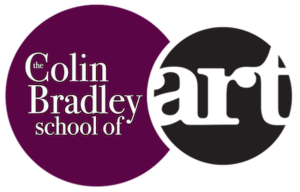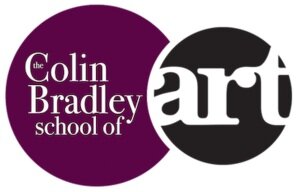What Makes a Good Landscape Painting?
Many years ago I took some of my paintings into a well-known art gallery in Croydon hoping they would consider displaying my work for sale to their customers.I spoke to the owner of the gallery and on viewing some of them he selected several he thought would be suitable. As you can imagine I was over the moon and quickly expressed my thanks, however then came the downer, he said that all my paintings contained figures and although he would show the paintings he felt that they would have a better chance of selling if they did not contain the figures. I was taken back by this statement as I had taken a lot of trouble finding and placing the figures in the landscape settings.
The Good News
The good news is that all the paintings sold despite there being people in them, in fact one of the paintings, a street view of Croydon, had over 20 figures in it. Nowadays it is rare that I do not include at least one person in a painting as I feel that this adds interest and poignancy to the work. So who's to say what is or what is not right and is it possible to say that anything goes when it comes to landscape paintings, well.. not quite.
What Makes a Good Landscape Painting?
So what makes a good landscape painting?How important is composition?Should it contain or not contain figures?Are there rules that should be applied and adhered to?Surely the artist has the license to produce whatever he/she desires?Well... not quite.The first consideration is "why are you painting this picture?" Is the intention to produce a work that will be admired by others? Is it going to be exhibited? Or is it a commission for someone?If the answer is yes to any of these questions then the artist is duty bound to do his/her level best to paint something that will be pleasing to the eye, and I am afraid that means following certain guidelines that the recipient will expect from the artist.Just as a good book has a beginning, a middle and an end, a painting has to fulfil the same degree of satisfaction to make it a good painting.
The Ingredients
Just as in all tasty recipes it the ingredients that count. First and foremost it is the composition of the landscape that is top of the list without that ingredient nothing will work. There is a basic rule that you can use to start off with and that is to split the image into three parts from both top to bottom and side to side.[fusion_builder_container hundred_percent="yes" overflow="visible"][fusion_builder_row][fusion_builder_column type="1_1" background_position="left top" background_color="" border_size="" border_color="" border_style="solid" spacing="yes" background_image="" background_repeat="no-repeat" padding="" margin_top="0px" margin_bottom="0px" class="" id="" animation_type="" animation_speed="0.3" animation_direction="left" hide_on_mobile="no" center_content="no" min_height="none"] For instance the top third could contain the sky or horizon line the bottom two would be the landmass, or the sky or horizon would occupy the top two thirds and the landmass the bottom third. From side to side again the subjects should be placed within the three sections evenly so that each section has interest. Now this rule is not set in stone and can be broken and adjusted as the artist sees fit but it is a valuable guide.
For instance the top third could contain the sky or horizon line the bottom two would be the landmass, or the sky or horizon would occupy the top two thirds and the landmass the bottom third. From side to side again the subjects should be placed within the three sections evenly so that each section has interest. Now this rule is not set in stone and can be broken and adjusted as the artist sees fit but it is a valuable guide.
Difficult Compositions
One of the most difficult scenes to paint and compose is a woodland setting. Here you have a whole lot of trees and shrubs that would test every artists patience and as far as composition is concerned where on earth would you start? Well that is not as hard as you think if you apply the two thirds rule.Almost certainly the trees would occupy at least the top two thirds of the picture and the landmass the bottom third. From side to side perhaps a break in the trees that would contain a winding path disappearing into the distance could be placed at the one third point, either end. I am sure that this would have conjured up a picture in your mind, so see how easy it is to compose with a blueprint.
The Four Corners
Another valuable rule at I apply to my work is the four corners of the picture.For rather like a good jigsaw puzzle the corners are the main support for all the sides. I try to make these interesting and try never to run any of the subjects into the very corners such as the edge of a river, the bottom of a fence, a tree line etc. Here it is better to finish the subject either above or below the point of the corner.
Figures or No Figures?
As you know I am always keen to place people into a scene if the plot demands it, many artists find this difficult because "if they get it wrong the people could spoil the painting so why take the chance?" I do see where they are coming from and if you do not feel they the painting would work with them in, it would be best to leave them out.
No Barriers
Another tip I can give you is try never to put up 'barriers' in your paintings, such as brick walls, fences, closed gates etc. as these create an impression of no admittance to you scene.For instance if you are painting a church scene with a brick wall between you and the church, recompose the scene without the wall. If you are painting a scene of field and want to feature a five bar rustic gate why not have it open? (unless the field contains cattle). There are so many examples I could give you but I am sure you can understand where I am coming from.Now as I have said all these rules can be broken but use them as guidelines when looking at composing your paintings.To learn how to draw landscapes using Pastel Pencils, try Colin's free courses.[/fusion_builder_column][/fusion_builder_row][/fusion_builder_container]

